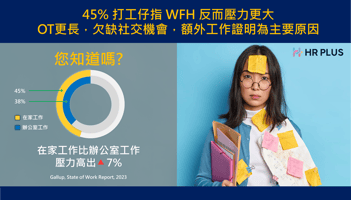How can data driven insights optimize your hybrid working model?
If you’ve gone through our website, you’d probably already know that Horus is our brainchild and first HR tech solution created to turn human data into actionable insights, but what was our thinking behind this? The idea is simple, by leveraging real-time human data we are able to offer a solution which opens up a realm of possibilities when it comes to implementing strategies towards your workforce and to understand your employees on a deeper level.
Our previous blog broadly covered whether it would be beneficial for your company to go to a hybrid working model permanently, and this blog is aimed at answering how some of the challenges that come with enforcing a hybrid working model for your organization can be turned into tools for success when using data driven insights to drive your strategies.
Key to Success

The saying ‘Success is in the Details’ couldn’t be more relatable when talking about implementation of HR strategies. When HR companies unlock the power of human data, they are able to understand their workforce on different scales. This is such a powerful tool because from the individual to the team to the collective, HR teams are able to pool different insights together to have a deep understanding without compromising time and effort. HR analytics has the power to measure and subsequently increase business impact. By identifying the gaps and opportunities, HR teams are able to plan for short and long-term on tangible data and sentiments. This data is not collected by outside sources of wider pools of companies but by their own people. This enables HR teams to tweak and design HR blueprints specific to their own organization without added risk of uncertainty whether these strategies will be successful or not.
Data Driven Insights and the Hybrid Work Model
As we enter into a world which embraces the hybrid working model, HR teams and companies are wary of the potential issues that could arise when employees begin to work away from the office whether at home or remote locations. Employee tracking, employee engagement, understanding employee sentiments and caring for the employee become so much more difficult as physical distance is created. While technological solutions have adapted to make sure much of the work that is done at the office is not affected in terms of productivity and efficiency, there is a lot more than what meets only the eye.
Further, due to the high information asymmetry, Human Data Insights become influential in situations like this because with a technological solution that enables real-time data and employee sentiment such as HORUS, HR teams are better equipped to deal with workforce issues, individual shifts in perception to the company and keeping their employees engaged. This also benefits supervisors and seniors within the company who at any time are able to address any professional concerns that they may have with individual employees or teams.
Disengaged employees
The errors made by disengaged employees for example could reach almost 100 fold compared to engaged employees. They may spend less time at work, tend to take more breaks and may procrastinate. This may not be because they are not motivated within their organizations but merely because working from home mingles with personal life too. With the help of bespoke employee surveys on motivation and company outlook, HR team are able to work with a library of human data specific to each employee, and personalizing this process will give employees a sense of belonging and help organizations build into the future as empathetic and caring.
Just in Time
Thus, with the help of technology and human data, we are able to humanize the workplace more even when employees are physically detached from their companies. With human data insights, one of the key advantages to HR teams is time.
Timing and being timely often goes under the radar and we only realize this when negative outcomes become reality and we ask ourselves ‘I wish I knew that earlier, maybe I would do things differently.’ In an age where employees are much more flexible to change jobs and are always looking for the next best opportunity, leveraging human data while implementing hybrid working models can help HR teams make decisions faster, more accurately and in a timely manner. They are able to prevent before having to cure and in the process create long-term retention of their best talent and improve organizational sentiment among the workforce.
On the flip side however, people analytics comes with its potential negative effects like any other concept. First of all, the wrong software may violate General Data Protection Regulation, further, the asymmetry between information available to employees and employers may bring difficulties, which is why the annual reports may be important and there can be instances where improper application of people analytics may not bring added benefits because acting on some information may not tell a true story of what is actually happening behind the scenes These are usually efficiency metrics applied tha may not always show a true picture.
People analytics to solve business problems

When we widen the scope of HR, it is a support function for the business. People analytics helps this support function
do a more focused job, enabling your teams to fine tune, pinpoint and act. A key factor that comes with people analytics is the opportunity to prioritize actual real-time insights that relate to your company.
Many of the actions you take are backed up with real information on your employees and this mitigates the risks of making costly decisions that may seem okay on paper and planning but when enforced does not make too much impact. Furthermore, the power of people analytics and HR doing the right job almost comes naturally. The key is looking at information, being able to ask the right questions and going head in with tangible and company workforce relevant solutions.
The role of HR teams has always been to continuously support its talent so that they are in the best position to execute company strategy. Leaders of organizations should always be equipped with the best possible tools to make the best talent decisions, this is why people analytics are so important because most if not all of these decisions are always data-driven ones.
This is why using people analytics as the driving force and engine pushing forward decision support for HR teams and leaders is key. Having a system that organizes such data is almost like having your own deposit of real-time data, insights and reports which are constantly compounding over time. Bringing these elements together will help companies make the most superlative decisions.
 Even at HR Plus, our design behind our product HORUS was built on this idea. To equip companies with the correct foundations to plant the ride seeds. We see HR as the beginning of every employee journey which starts at recruitment. With the right data, and ability to ask timely questions, HR teams will be equipped with the tools to put the right people in the right place without risking overall organizational strategy.
Even at HR Plus, our design behind our product HORUS was built on this idea. To equip companies with the correct foundations to plant the ride seeds. We see HR as the beginning of every employee journey which starts at recruitment. With the right data, and ability to ask timely questions, HR teams will be equipped with the tools to put the right people in the right place without risking overall organizational strategy.
The purpose behind strategic decisions is that it involves making resourceful decisions while prioritizing actions. A balance must be achieved between technology and HR choices and recognize that there is no single method that would be suitable to everyone. Some organizations need the relevant supporting tools that can be implemented quickly and flexibly. Other methods need teams and leaders who are willing to sacrifice time and the need for speed by applying more robust long-term tools. A sound people analytics strategy will support the ways in which your organization makes decisions, but it should not be forgotten that this strategy needs to be well documented and educated to the masses across your company so that the people this strategy is for, know exactly what is happening for their own benefit. And yes, your people analytics strategy should be aligned to support the overall organization’s strategy and the HR mission.
People analytics teams will vary in their strategies for technology, deliverables, operating model, internal collaborations, and communications.
Your people analytics strategy should articulate the technologies, deliverables, operating models, and methods of communication that will enable the best talent decisions. These decisions will be made by central groups such as the HR leadership team, as well as HR and business leaders in every part of the organization. The value of people analytics is to be measured by the improvement in talent decisions.
Below is a workflow that can help HR teams
- Applying the right decision through seeing opportunity
- Asking for clarification on the questions to be answered
- Having data and insights readily available and easy to locate
- A system that is able to visually generate insights from data driven surveys
- Working with leaders to make decisions on actions to be taken
- Implementing action within organizations which are communicated with transparency company with to show employees the value their people analytics is creating to give them a better working experience and organization culture
- Following up with the workforce to check if strategies are working
The power of people analytics
Overall, people analytics when used well combine predictive and qualitative data, helping HR teams understand workforce dynamis, human capital efficiency and tracking employee experience. With the help of a people analytics tool, organizations can identify and implement needs. Saving HR teams time to liaise with senior management to innovate in a purposive manner
While this blog is for educational purposes, if it prompts any questions you would like to speak to our team about, or our HR solution HORUS, we’re always happy to speak with you! Until next time.




